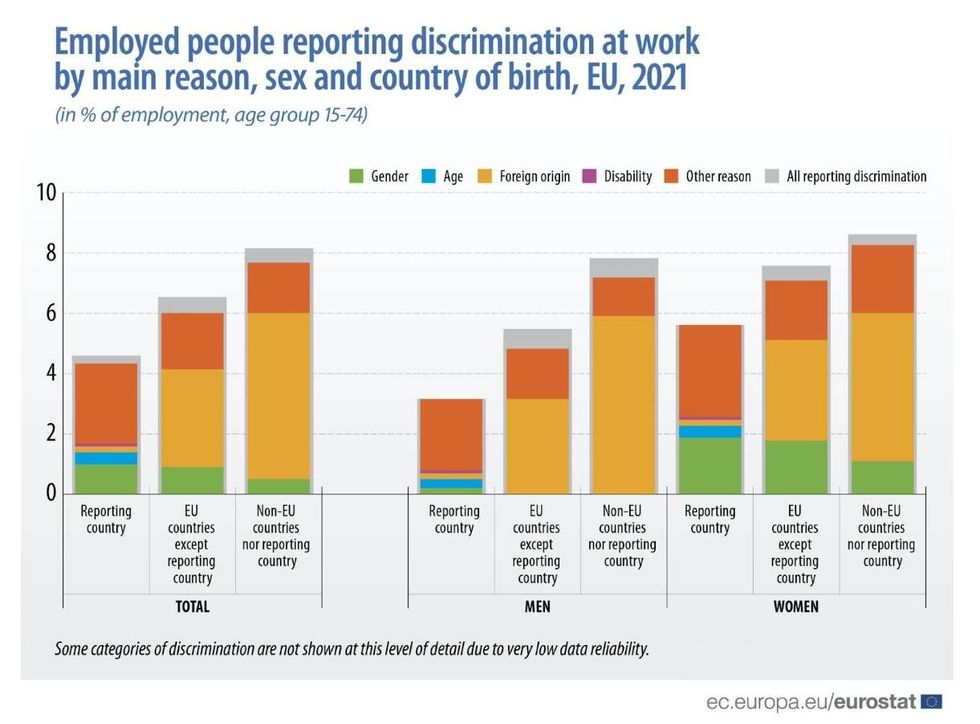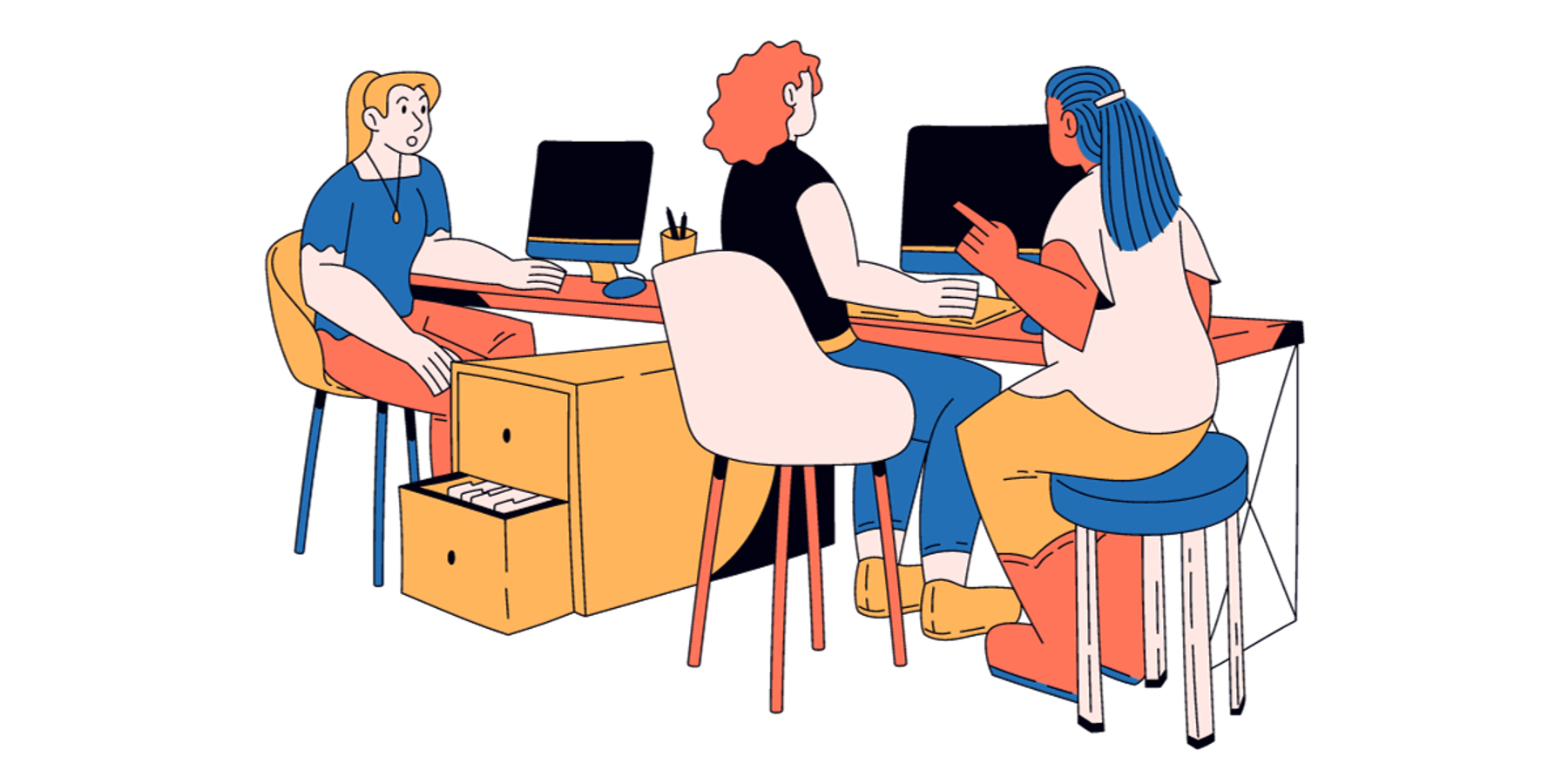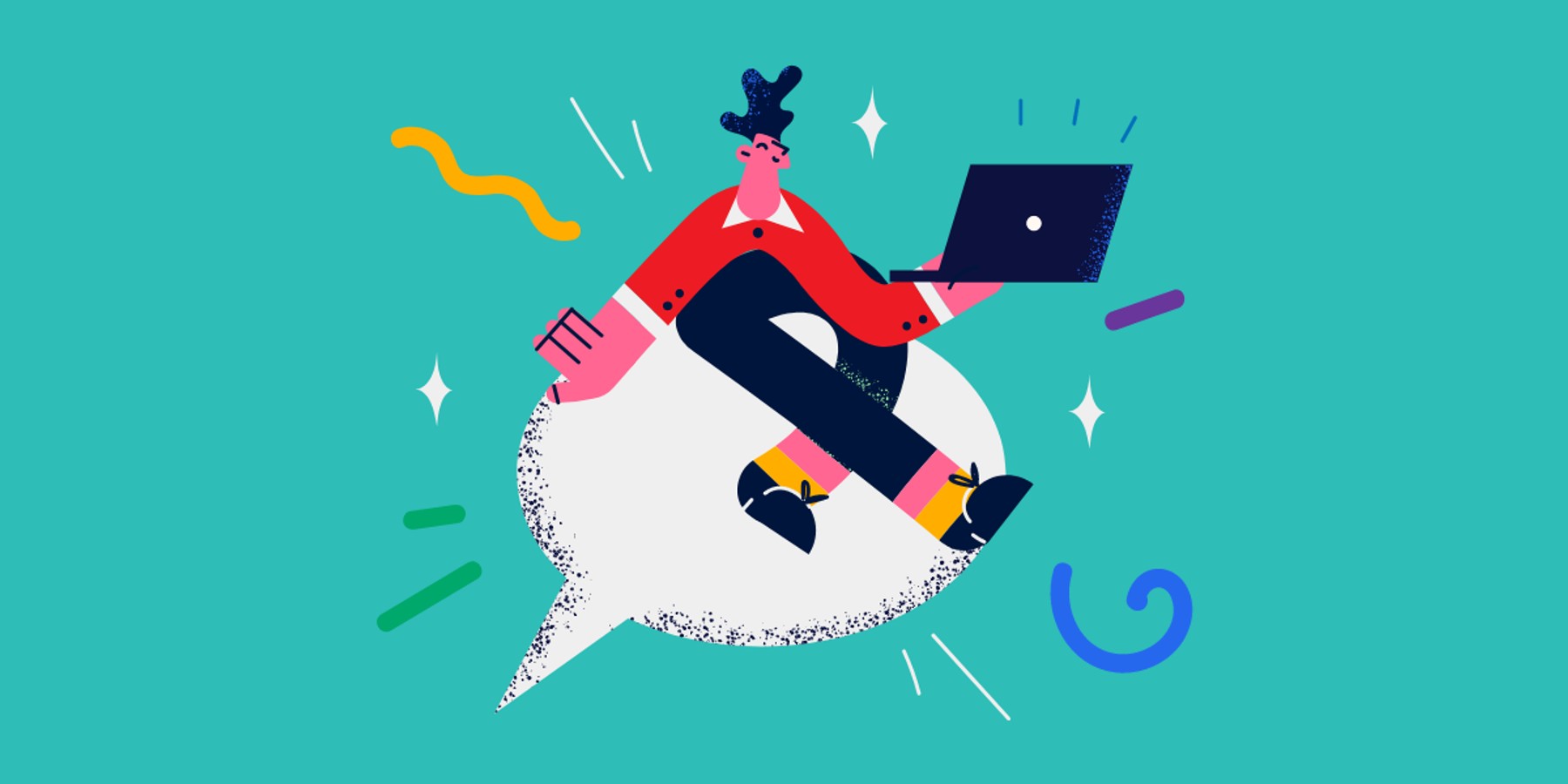Discrimination in the workplace is a global problem. In the U.S. alone, 61% of workers have experienced or witnessed discrimination based on age, race, gender, or sexual orientation. And these aren’t the only identity- and background-based categories subjected to discrimination. People with different abilities, neurodiverse statuses, ethnicities, religions, languages spoken, accents used, and socioeconomic levels often experience discrimination at work as well.
Our What Diverse Talent Wants survey revealed that ageism (32%), misogyny and gender-based discrimination (25%), and racism and ethnic discrimination (17%) are the most commonly reported forms of workplace bias. When asked about which DEIB issues their companies should take stronger stances on, racism is at the top with 38%, followed by ageism (33%) and misogyny (29%). These findings highlight the urgent need for organizations to implement meaningful DEI strategies that go beyond surface-level commitments to create truly inclusive work environments.
The consequences of discrimination in the workplace begin with gaps in hiring, wages, and representation in management for marginalized groups. These consequences then radiate into society, including via health, education, and income disparities.
There are international, national, and local laws that protect people from discrimination. However, many underrepresented groups are also impacted by a systematic suppression of information about these resources and a lack of access to justice. At the company level, organizations should have proactive policies in place to address discrimination. This guide will provide a comprehensive look at discrimination in the workplace, as well as at key ways to prevent and eliminate it.
What is discrimination in the workplace?
Discrimination in the workplace occurs when an employer treats an employee or job applicant less favorably because of certain characteristics unrelated to the person’s competencies or the requirements of the job. These characteristics include (but are not limited to) gender, race, age, religion, sexual orientation, national origin, or ability. What is the effect of discrimination? It impairs equality of opportunity and treatment in the workplace.
Discrimination in the workplace can happen against a single person or a whole group. It can be perpetrated by business owners, managers, or coworkers. This unequal treatment does not have to be intentional for it to be discriminatory. Often, workplaces may be engaging in discriminatory practices without being aware of it.
What employment discrimination looks like
Discrimination in the workplace can manifest in various forms. While no discrimination is tolerable, it becomes a serious issue when it involves:
- Unequal treatment due to characteristics such as race, gender, disability, etc.
- Harassment by anyone in your workplace due to those same characteristics
- Denial of workplace accommodations needed due to disability or religious belief
- Improper questions about medical information
- Retaliation for complaints about job discrimination or for exercising legal rights
Where does discrimination occur?
Discrimination in the workplace can happen before a candidate is hired, on the job, or when the employee is leaving. These are common work situations where discrimination occurs:
- In job descriptions
- During recruitment: In applications, screening, and interviews
- In salary and compensation
- In work hours assigned
- In paid time off (or the lack of it)
- In parental benefits
- In job security (or a lack of it)
- In job assignments
- In job promotions and future prospects
- In training and development opportunities
- In response to participation in employee organizations or unions
- In benefits
- In working conditions/health and safety
- In job termination or separation
For the latter point, note that discrimination may also occur when an employer disciplines or terminates an employee specifically for discussing or disclosing salary information — something that a slew of new salary transparency laws are hoping to prevent.
Types of discrimination in the workplace
There are many different types of discrimination in the workplace that people report experiencing. Which categories are protected will depend on national and local laws.
- Ageism
- Racism and/or ethnic discrimination
- Sexism
- Sexual orientation or gender identity-based discrimination
- Ableism
- Discrimination around one’s status as a parent
- Religious discrimination
- Caste discrimination
- Socioeconomic and/or educational background discrimination
- Accent discrimination
- National origin and/or immigrant status discrimination
- Pregnancy discrimination
- Sexual harassment
- HIV/AIDS status discrimination
- Discriminating against trade union membership status
- Discriminating against political opinions & affiliations
- Genetic information discrimination — meaning, genetic testing or results of any genetic testing including family medical history
- Reprisal/retaliation against those who’ve made discrimination complaints or filed charges
What distinctions are allowed?
Companies are allowed to make some distinctions between employees and/or job candidates that are not considered discriminatory. Making distinctions based on the skills needed for a job position is acceptable. Different compensation for employees with different skill levels, education, or hours worked is allowed. Providing protections or benefits for those categories is not considered discrimination under the law. For example, providing parental benefits to pregnant workers is not discrimination against workers who are not pregnant. Companies can (and should) work to correct historical exclusions and discrimination and instead promote equity in the workplace. This is not considered “reverse” discrimination.
Although 2025 will be a challenging year for DEI, with many hard-won achievements for women, Black professionals, and—most notably—transgender individuals being denied or rolled back, the reality is that these individuals are still here, in the workplace, facing the same barriers as before. Companies have a responsibility to stand for them, not just in words but in action—by guaranteeing their basic rights, fostering truly inclusive environments, and creating pathways for them to thrive.
But inclusion and diversity aren’t just about doing social good—they directly impact employee engagement, productivity, and ultimately, profit. Our What Diverse Talent Wants 2025 survey showed that inclusion and belonging are deeply connected to fundamental workplace needs like flexibility, career growth opportunities, and upskilling. And at the center of it all is leadership.
Talents today want leaders with more empathy, who are fully present and actively support professional development. They want leaders who embrace innovation and collaboration, practice effective communication and active listening, and create a balance between autonomy and mentorship—which makes sense, as we all need guidance to grow and space to flourish.
In the end, effective leadership is about inclusivity—having a strategic vision for learning and growth while recognizing flexibility in its many forms as an essential part of employee well-being. Organizations that understand this will not only foster stronger workplace cultures but also drive sustained business success.
Harassment as employment discrimination
Harassment is considered a form of discrimination in the workplace. Employees and job candidates are protected from harassment under most national and local laws.
In the U.S., harassment is “unwelcome conduct that is based on race, color, religion, sex (including sexual orientation, gender identity, or pregnancy), national origin, older age (beginning at age 40), disability, or genetic information (including family medical history).”
U.S. law specifies that “petty slights, annoyances, and isolated incidents” are not considered illegal forms of harassment. Harassment is to be considered illegal when:
- Enduring this unwelcome conduct is a condition of employment.
- The conduct makes the workplace hostile, intimidating, or abusive.
Employers are liable for harassment in the workplace when it results in negative consequences for workers such as not getting hired, job termination, or a loss of wages.
Data about discrimination in the workplace
Data shows that discrimination is a persistent and ongoing problem around the world. Common indicators of discrimination in the workplace are gaps in employment rates between groups, wage gaps, lawsuits filed, and reports of discrimination.
Reports of discrimination
Around the world, people from various groups and backgrounds report being discriminated against at work.
- In 2021, 5.23 million women in the EU reported being discriminated against at work. By comparison, 3.63 million men reported the same.
- In the US, 31% of women report being discriminated against when applying for jobs because of their gender.
- Nearly half (45.5%) of surveyed LGBTQIA+ workers in the U.S. reported unfair treatment at work because of their sexual orientation or gender identity. One-third (31.1%) reported experiencing discrimination in the last five years.
- 57% of Black Americans say they’ve experienced discrimination in salary and promotions.
- 54% of Native Americans living in majority Indigenous areas report facing discrimination in hiring, promotion, and pay.
- 27% of Asian Americans report being discriminated against during job applications,pay, and promotion consideration
- Eurostat published this table about experiences of workplace discrimination in the EU:
A 2018 field study, in which researchers sent mock job applications, found that applicants who disclosed a disability received 26% fewer callbacks than applicants who did not disclose a disability. In the U.S., the most common type of discrimination in the workplace is disability related.

A total of 8,694 American Disability Act (ADA) lawsuits were filed in 2022. The cost to a business for discrimination lawsuits includes lost pay, emotional distress, and punitive damages. These costs can be in the hundreds of thousands per case.
Perhaps most troubling about reports of discrimination is that White people often don’t or struggle to see it. Some 80% of Black Americans say Black people face a lot of discrimination, while only 38% of White Americans think so.
Gaps in employment and wages
Data around employment rates as well as wage information are clear indicators that discrimination is pervasive across genders, races, abilities, and sexual orientations.
Gender
- Across the EU, there is an average 10.6% gap in wages between men and women. In the U.S., that wage gap is 16.9%, and in Korea it’s a staggering 31.1%.
- In the U.S., women hold 41.4% of all managerial positions. Across many EU countries like Denmark (28%), Germany (29%), and Spain (33%), women hold about one-third of all managerial positions.
- The OECD average for the share of women who have seats on the board of publicly traded companies is just 29.6%.
- Across OECD nations, 68.6% of men are employed while only 52.4% of women are employed in the labor force.
Race
- In the U.S., unemployment rates disproportionately affect Black Americans and Native Americans. The unemployment rate for Black Americans (8.6%) and Native Americans (8.2%) are much higher than the national average (5.3%). The employment-population ratio (the proportion of a group that is employed) is also much lower for Black Americans (55.7%) and Native Americans (55.5%) than it is for White Americans (58.6%).
- Latino Americans ($777/week) and Black Americans ($801/week) continue to have significantly lower wages than White Americans ($1018/week).
- A study by the French government in 2020 found that a job applicant with an Arabic-sounding name had less than a 25% chance of a callback.
Disability
- In the U.S., nearly 8 in 10 people with a disability are not in the labor force compared to 3 in 10 of those without a disability.
- Across the OECD, the employment rate of people with a disability is 27% lower than people without a disability.
- Low rates of employment translate into higher rates of poverty for people with a disability in both the United States and Europe.
LGBTQIA+ people
- In the U.S., LGBTQIA+ people have a lower rate of employment (88%) compared with non-LGBTQIA+ people (92%), despite having identical rates of higher education.
- 68% of queer workers in the U.S. report having heard negative comments, slurs, or jokes about them at work.
- 49% of transgender workers report having been fired or not hired based on their LGBTQIA+ status, compared to 28% of cisgender employees.
- 36% of queer workers of color have experienced verbal harassment at work compared to White queer workers.
Discrimination in the workplace laws
What is considered discrimination in the workplace depends heavily on the law under which the company operates. Companies and HR professionals should be well-versed in workers’ rights, legal frameworks, the organizations that protect those rights, and procedures for filing discrimination complaints.
In 2025, however, the landscape is more uncertain due to an intense DEI backlash led by the federal government, creating ambiguity around workplace protections and initiatives. But despite this pushback, companies must find ways to uphold their commitment to inclusion—whether through rebranding DEI efforts or implementing strategies that protect employees and set them up for success. Prioritizing equity in a shifting legal environment isn’t just about compliance; it’s about building resilient, engaged workplaces where all employees can thrive.
Worker rights and laws
In the U.S., there are a number of federal laws protecting worker rights. These include:
- Title VII of the Civil Rights Act — prohibits discrimination based on sex, race, color, religion, national origin, and retaliation.
- Pregnancy Discrimination Act — expands protections based on “sex” and includes pregnancy, childbirth, or conditions of childbirth
- Equal Pay Act of 1963 — equal pay for equal work
- Age Discrimination in Employment Act of 1967 — protects workers 40+
- Title I of the Americans with Disabilities Act of 1990 (ADA) — prohibits discrimination based on disability
In the EU, nations are required to comply with the Charter of Fundamental Human Rights. This includes protection against discrimination based on “sex, race, colour, ethnic or social origin, genetic features, language, religion or belief, political or other opinion, membership of national minority, property, birth, disability, age, or sexual orientation,” as stipulated in Article 21. Fundamental rights are also protected by each member state’s constitution.
There is limited public awareness of worker rights. In many countries, less than half of the population report knowing their rights in case they become a victim of discrimination.
Anti-discrimination organizations
The federal body responsible for enforcing federal anti-discrimination laws in the U.S. is the Equal Employment Opportunity Commission (EEOC). The EEOC is responsible for investigating charges of discrimination, attempting to settle the charge, and filing lawsuits to protect individuals’ rights.
In the U.S., there are also state-level institutions such as the Civil Rights Department (CRD) in California. They are responsible for enforcing state laws regarding discrimination.
In the EU, violations of rights must first go through the national court. Only after the national court has addressed the case can it move onto the European Court of Human Rights (ECHR).
Procedure for filing complaints
Filing a discrimination complaint in the U.S. with the EEOC follows this process:
- File a charge within 180 days of when discrimination occurred.
- EEOC sends a notice of charge to the employer.
- Mediation between employer and employee, if all parties agree.
- Investigation — if mediation is not successful, the EEOC will investigate (approximately 10 months).
- Notice of Right to Sue — if the EEOC finds that your rights were violated, this notice is issued so that the employee can initiate a lawsuit.
Discrimination in the workplace examples
Discriminatory actions may be direct or indirect. Direct discrimination occurs when an employer makes an explicit contrast or exhibits explicit exclusion or preferences for one group over another.
For example, a “no beards” employment policy that applies to all employees regardless of race or national origin may be illegal. Strict adherence to Sikhism, for example, requires adult men to have beards. If the “no beards” policy is not related to the job and negatively impacts employment opportunities based on race or national origin, the policy is illegal.
Indirect discrimination occurs when a distinction is implied in the way workers are treated, rather than being explicitly stated. For example, an all-staff training is held on the second floor of a facility with no elevator or accessibility. Without explicitly saying so, this may exclude employees that use mobility aids such as a wheelchair. Unable to attend such a training would disadvantage affected employees when it comes to promotion.
How to keep discrimination out of the workplace
Here are four proactive steps to help prevent and eliminate discrimination at your company.
1. Use inclusive recruitment strategies. Revisit all of your recruitment and hiring practices through the lens of Diversity, Equity, Inclusion, and Belonging (DEIB). Inclusive recruitment strategies will ensure you’re not excluding anyone. Try strategies like:
- Writing inclusive job descriptions
- Prioritizing a positive candidate experience
- Featuring diversity in your recruiting material
- Addressing and eliminating bias when screening and interviewing
2. Get specific with your DEIB goals. Per the Harvard Business Review, 60% of organizations have a DEI strategy in place, but only 26% of them have specified goals in gender representation, and just 16% have done the same for race representation. Setting specific goals for your DEIB strategy helps to hold a company accountable for implementation and progress.
3. Commit to pay equity. While the gender pay gap has improved, it could take 25 years to close the racial pay gap. Committing to pay equity across genders and races means having solid data. A company needs to use HR, demographic, and payroll information to determine where gaps in pay exist. Look for factors such as education, skills, or responsibility.
4. Educate all of your staff. Effective DEIB training is critical in rooting out discrimination. Staff at all levels — especially leadership — should participate in training. Training should also be consistent and proactive. If DEIB training happens only in reaction to issues when they arise, it has less chances of being effective.




